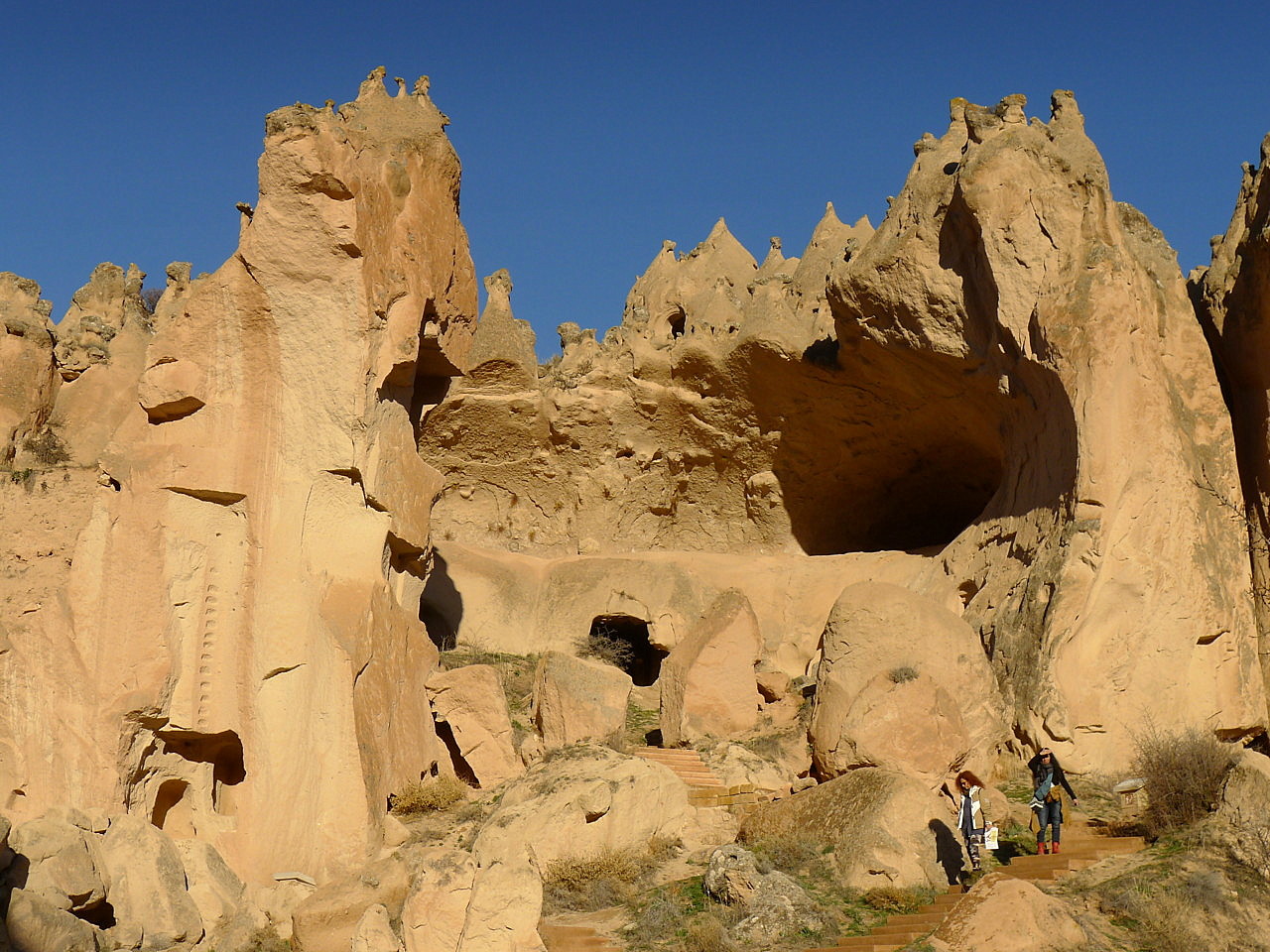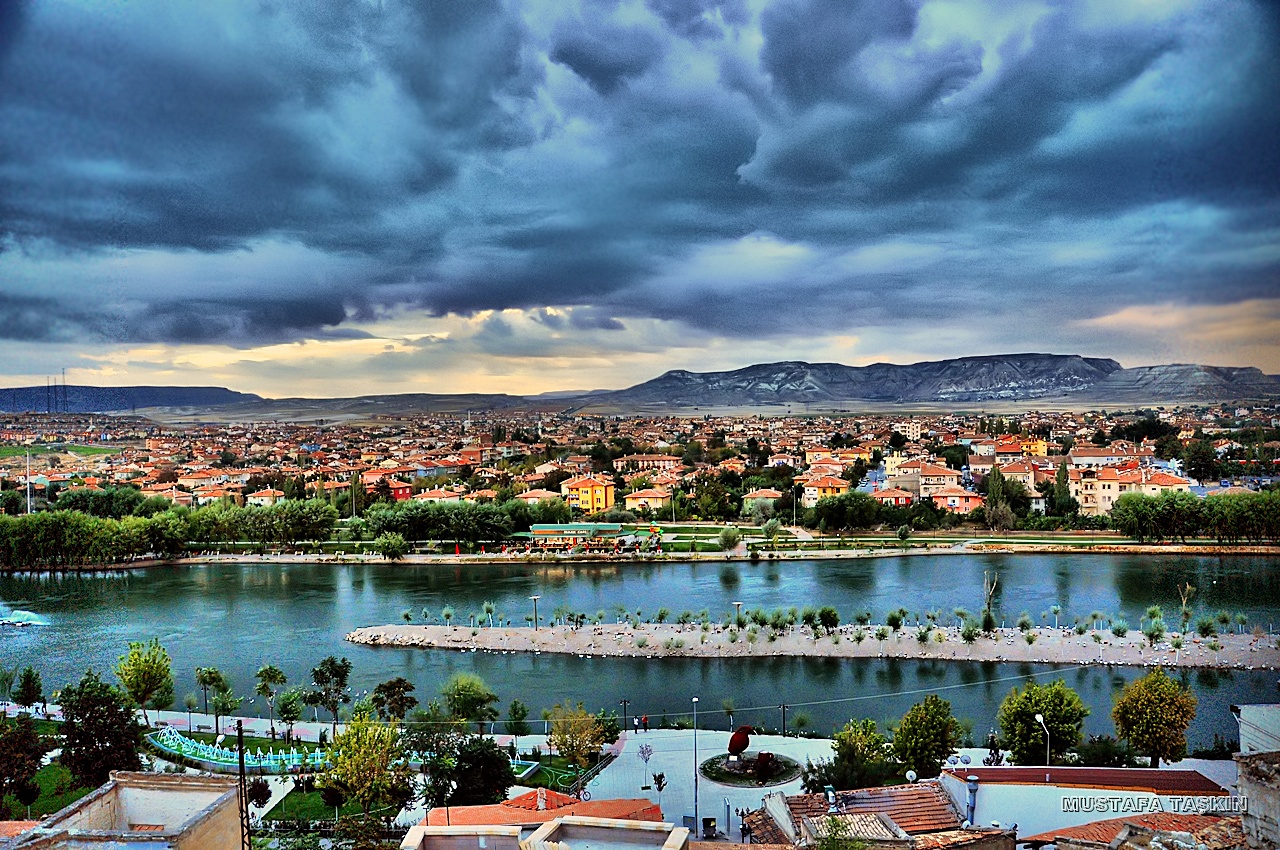To the east of Nevsehir, Avanos, built on two sides of Kızılırmak, is one of the most important tourist destinations of the Cappadocia region with its unique fairy chimneys, vases and underground cities, churches, handicrafts such as carpentry, carpentry and wine growing.
Hittite, Phrygian, Assyrian, Roman, Byzantine, Seljuk and Ottoman. Avanos has an important place in Cappadocia places with its history dating back to at least 4000 years ago. The earliest known works related to the foundation of Avanos are the mosques and bridges of the Seljuk period.
Avanos Places to Visit
1. Zelve Valley
Zelve Valley, one of the most important open-air museums in the Cappadocia region and 3 km from Avanos, has 15 churches that accompany hundreds of interesting fairy chimneys. You are traveling among the interesting fairy chimneys of millions of years, which is one of the most important addresses of trekking enthusiasts. This is one of the most important places to be seen in Cappadocia.
2. Pasabag
Avanos Paşabağı Paşabağ, also known as the Monastery Valley, located on the Zelve road, 3.5 km further from Avanos, is a region where the cape bays are crowded. In the middle of a three-headed fairy in the middle of the valley, there is a chapel dedicated to St. Simeon and a monastery opposite. The chapel, which is believed to have been inhabited by Saint Simon for 15 years, is located on the right side of the road, within 200 meters of the valley.
3. Sergeant
Avanos Cavusin Cavusin, a village connected to Avanos on the way of the Generation-Avanos, is one of the oldest settlements carved into the rock masses of the Cappadocia region. The most important structures in the neighborhood are the Çucuşin Church, the Baptist Yahya Church and the Crusader Church in the vicinity of Güvercinlik Church and Güllüdere built in the name of the Byzantine Emperor. Kızılçukur and Güllüdere Vadis where 12 churches are located also starts from Çavuşin border which is connected to Avanos.
4. Sarıhan Caravanserai
Avanos Sarıhan Caravanserai The Sarıhan Caravanserai, a 13th century Seljuk architectural example on the Silk Road, was built during the reign of Seljuk Sultan Izzettin Keykavus. Due to the stone color used in the interiors, “Saruhan” is a single-storey inn surrounded by high walls. In the building where the large courtyard is located, there is a section where summer and winter rooms, mosque and horses are connected.
5. Özkonak Underground City
Avanos Ozkonak Underground City Situated at a distance of 13 km from Avanos, Ozkonak Underground City occupies a very large area where the volcanic layers are intense. B.C. The city, which is thought to have been built in 400 and has four floors, has narrow and long holes to allow communication. When the entrances of the chambers are closed, the ventilation is provided by these narrow and long holes.
6. Dragey Church
Avanos Dereyamanlı Church The Dereyamanli Church, located in Avanos, which is a 2 nd century building, is one of the most important churches of the Cappadocia region. The church, which the representatives from the Avanos Municipality and the Vatican opened with a ceremony, was offered to the service of Christians and religious groups coming to the region. The spiritual leader of the Catholic world is Pope II. It is known that Jean Paul wants to come to the Dragey Church. Also known as the Mother Mary Church, Mary and Mother Hz. Jesus has frescoes. It is possible to drive to the front of the Dereyaman Church and it is also possible to reach the church on foot.
7. Güllüdere Church
Gulludere Kilisesi Güllüdere Kilisesi (St. Agathangelus Church), located on a steep slope to the left of the Güllüdere Valley, is a structure built in the 6th and 7th centuries and completed with an abscess added during the 9th and 10th centuries. It is thought that the symbol of the cross in the structure known to belong to the iconoclastic turn represents the holy cross in Jerusalem.
8. Chechen Tumulus and Sarcophagus
Avanos Çeç Tumulus It is thought that the Tumulus of Çeç, 32 meters high, about 15 km west of Avanos and south of Kızılırmak is a royal tomb like Gordion, Nemrut Dağı and Karakuş. The hill, which is made up entirely of stone blocks and can be seen even from Avanos, is sometimes compared to a cowboy hat and sometimes to a funnel.
The sarcophagus at the edge of Kızılırmak in Avanos is very important in terms of being the only sarcophagus uncovered to date in the Cappadocia region. In 1971, the coffin in the form of a sarcophagus that emerged by chance was uncovered by unidentified persons, and unfortunately the finds were stolen. Pathological and paleoanthropological studies on the corpse revealed that the lahtin belonged to a woman whose hair was painted with henna.
9. Documentary Monastery
The Avanos Belh Monastery The Belhsa Monastery, located on the Avanos road and on the left side of the Uzkonak Town, is entered through a pavilion ceiling on a hill. MS. 6. The building, which is believed to have belonged to the Century and which has been destroyed in large part, can be visited by horses’ baits and a dark room on the side called the prison.
10. Alaattin Mosque
Alaaddin Mosque, a 13th century Seljuk artifact, is a historical building thought to have been built by Sultan Seljuk Sultan Alaaddin Keykubat in 1202. The first part of the cut stone, square plan is illuminated by the windows on the niche of the place of worship where the building is covered with a dome with a trumpet. This section of the second splitting glass with a pointed arch was repaired in the 17th century and the third part was added in 1964.
11. Bowl Workshops
Avanos Güzey Museum Although some parts are out of the city, many of the pottery workshops in Avanos, the majority of which are located in the main center, are active in the natural caves that become rocky. Güray Seramik is one of the workshops that is the lifeblood of the district economy. The Güray Museum, the world’s first and only underground ceramic museum, is a very important museum exhibiting the historical development of pottery and ceramic art. The museum is also home to international events, where visitors can experience the pottery making by seeing the stages of pottery making.
MORE















